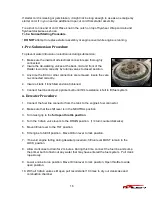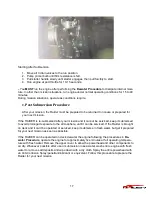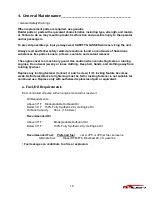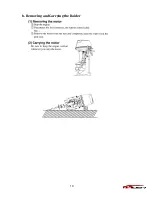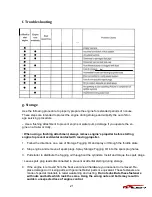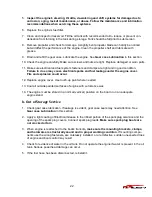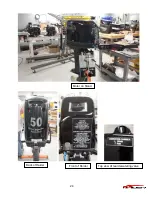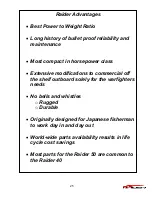
15
If you suspect the engine is overheating or has overheated, STOP the engine
only when it is
safe
.
When operating the engine, the water intakes must be completely
submerged.
Make sure the water intake screens are not in-
stalled upside down
(ramps must be forward). If upside down,
the engine will overheat. Observe proper transom height and en-
gine trim angle.
When engine is running, the water pump indicator on the star-
board side of the lower motor cover must be discharging a steady
stream of water. Check the indicator often, particularly when op-
erating in weeds, mud, or debris laden water, or at an extreme
engine angle.
IF
the water pump indicator stops or becomes intermittent, reduce engine speed to an idle when
it is safe. Shift engine into REVERSE and operate at a slow speed for about 10 seconds. This
might clear debris blocking the water intake screens.
IF
the water pump indicator is still
not discharging
a steady stream of
water,
SHUT OFF
the engine when it is safe. Clean the water intake
screens and water pump indicator. Restart the engine and run at idle.
IF
the water pump indicator still does not discharge a steady stream of
water,
SHUT OFF
the engine when it is safe.
DO NOT
attempt to operate engine.
IF
a steady stream of water
is visible
from the water pump indicator,
check to see if the re-
strictor is installed in the end of the water hose
. Without it, the engine and ECU will over-
heat. Continue to run engine at SLOW SPEED ONLY when it is safe until it returns to normal
operating temperature.
If the engine overheats; the cylinder and exhaust cover screws must be re-torqued.
s. Emergency Starting
Make sure the shift lever is at NEUTRAL to prevent sudden boat
movement when the engine starts.
The engine cover is a machinery guard. Prevent injury by keep-
ing hands, clothing, and hair clear of all moving parts. DO NOT
use your hands to turn the flywheel; use recoil starter only.
Prevent electric shock by keeping clear of the ignition coil and
spark plug leads when the engine is being started or is running.
Shock can cause serious personal injury under certain conditions.
Unlatch, then lift and remove engine cover.
Reach inside the cowling cover. On one side you will find a rope with handle; on the other
side of the cowling you will find a tool that allows the removal of the pull starter.
Use the special service tool to remove the three screws retaining the starter housing.
Lift the pull starter assembly from engine.
Take stored starter rope and wind on the engine flywheel with the knot end
in the grove.
















